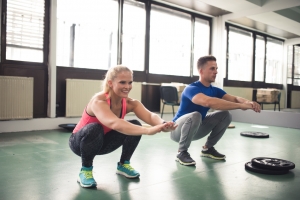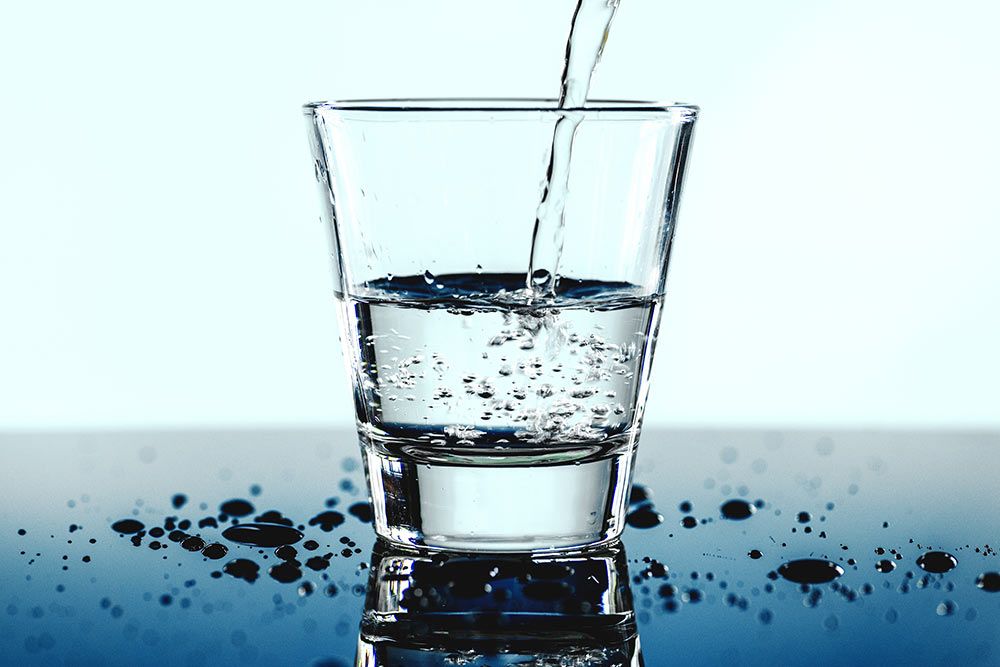4 Essential Exercises

Dayton Kelly
Essential to the development of any strong training plan is the concept of muscular symmetry: following a training program that excludes certain muscle groups promotes injury and leads to a plateau in progress. This is especially relevant when strength training and is part of the reason we should lift weights. People who regularly exercise their quadriceps, but never their hamstrings, are at an increased risk of having knee injuries at their knee; as well, people who often row but never work out their abdominal muscles often present with lower back injuries (Donatelli, n.d.) (Perich, Burnett, O’Sullivan, & Perkin, 2011).
Unfortunately, many people are guilty of these types of behaviours; it is not uncommon to hear of people avoiding working certain muscle groups because they do not enjoy those particular workouts. However, developing a training plan that stimulates muscular growth of your entire body is not difficult should you follow simple guidelines.
Related Article: Strength Training: Integral to Wellness as we Age
The goal of a training plan is to make you stronger in your daily life. Therefore, a functional training plan should include exercises that reflect the things that you do. As all of your daily activities are likely enormous in number, they can be grouped into four distinct movements: pushing out with the arms, pushing up with the legs, pulling up with the arms and legs, and pulling down with the arms. By incorporating a compound exercise that works in each of these planes of movement, a rounded training plan is formed.
It is important to note that not just any exercise will do; the exercises selected must include movement at a number of joints. Four exercises meeting these requirements would be push ups, squats, deadlifts, and pull ups. It is advisable to include these four exercises or some variation in any training program. However, not everyone can or likes to perform these exercises, so we will review what is important about each one so that reasonable substitutes can be determined.
The push up works primarily your chest, triceps, shoulders, and core. Numerous smaller muscles are also activated to assist in stabilizing the body to prevent you from falling over (Cael, 2010). It is this second component that makes this exercise so suitable. Real life activities are not stabilized for you, and many accidental injuries are the result of an inability to balance which injures small muscles. By strengthening these smaller muscles, we create resilience to injury. The problem with this exercise is that many beginners do not have the strength to perform push ups. This can be rectified by doing a kneeling push up where the knees touch the ground during the movement or a push up against the wall where the user simply stands, leans into the wall, and pushes themselves out.
Squats are important for developing the quadriceps, glutes, core, and a number of other smaller muscles (Cael, 2010). A benefit of this exercise is that people are can often move greater weight in this exercise than in others, making it a fantastic stimulus for bone strengthening. Along with deadlifting and push ups, squats force the exerciser to balance eliciting this same benefit of smaller muscle group strengthening. Those who have lower back pain often complain of pain during squats.
If the movement is uncomfortable to the lower back, symptoms can be relieved by doing split squats, a variation where the exerciser stands on one leg with the other leg resting on a bench behind them. The legs must be worked one at a time, but by extending one leg behind the body, arching of the back is prevented, the causative factor of pain in many of these cases. Lunges and weighted jumps are also suitable replacements.
The highlight of deadlifts is the involvement of so many muscle groups, in addition to being both an exercise that requires balancing and an exercise people can commonly lift a heavier weight. Deadlifts primarily work the upper back, lower back, glutes, and hamstrings (Cael, 2010). It complements squats well by working the muscles in the legs that squats do not emphasize. Deadlifts are difficult to replace and are probably most easily remedied by a combination of exercises such as a Romanian deadlift, a leg press, and a farmer’s walk.
Pull ups are similar to the aforementioned exercises in that they require stabilization around the shoulder joint, but the real benefit of this exercises is that it works a group of muscles the others miss. The biceps, posterior shoulders, and upper back are aggressively involved in this movement (Cael, 2010). It also promotes shoulder mobility as the user hangs from the bar. A lat pull down or a laying pull up are good options for those who cannot do pull ups. In a laying pull up, the exerciser lies on the ground with a bar or bench above them and pulls just their torso up to the bar, hinging at the hips.
Related Article: Strength as a Safety Net
In summary, adopting a well rounded strength training program is paramount to continued health. The incorporation of push ups, squats, deadlifts, and pull ups into your workout routine will ensure this is achieved. These exercises are selected because together they hit all major muscle groups due to their multiple joint involvement; they require balance eliciting the involvement of numerous smaller muscle groups; and they are practical with relation to everyday life. Happy training and keep up the good work!
References
Cael, C. J. (2010). Functional anatomy: Musculoskeletal anatomy, kinesiology, and palpation for manual therapists. Baltimore: Lippincott, Williams and Wilkins.
Donatelli, R. (n.d.). Muscle Imbalance and Common Overuse Injuries. Retrieved from SportsMD: http://www.sportsmd.com/performance/muscle-imbalance-common-overuse-injuries/
Perich, D., Burnett, A., O’Sullivan, P., & Perkin, C. (2011). Low back pain in adolescent female rowers: A multi-dimensional intervention study. Knee Surgery, Sports Traumatology, Arthroscopy, 19(1), 20–29. doi:10.1007/s00167-010-1173-6.
You Might Like:

















